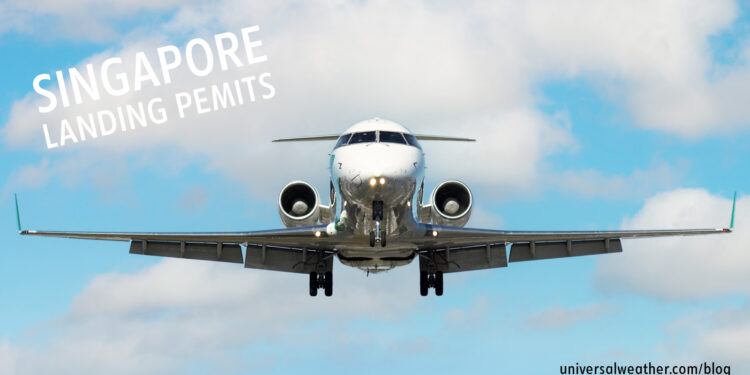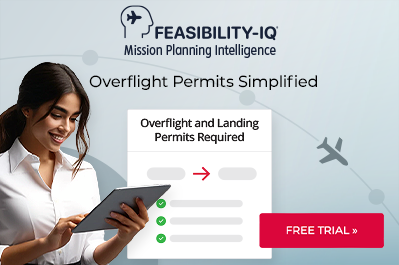Charter Landing Permit Changes for Singapore

This is a post by author Yvonne Chan. Yvonne is managing director for Universal Aviation Singapore, which has an aircraft ground-handling facility in Seletar. Yvonne is an expert on business aircraft operations in Singapore and can be contacted at yvonnechan@universalaviation.aero.
Singapore authorities recently changed rules/requirements for charter operations to the island nation. It’s now necessary to request an “operations permit” prior to obtaining a charter landing permit. Once an operations permit is approved, it generally takes only about 24 hours to obtain an air transport landing permit.
The following is an overview of what you need to know:
1. Singapore landing permits are only required for charter operations
Private non-revenue flights to Singapore do not require landing permits, but charter (non-scheduled commercial) and charter medical flights do. Official lead time for air transport landing permits is three business days.
2. Singapore permit requirements have recently changed
As of June 17, 2013, the procedure for obtaining Singapore landing permits changed. A non-Singaporean registered aircraft operator must first obtain an “operations permit” prior to a landing permit being approved. Lead time for each new application for an operations permit is three business days – assuming all required documentation is presented upfront. Renewal of existing operations permits takes three business days, with an express application requiring just 24 hours. Any new operations permit request, however, must be submitted at least three business days in advance – no exceptions.
3. Know the operations permit process
When an operations permit is granted, it may include technical or operational limitations. This could include restrictions on certain aircraft types, no or limited all-weather operations, and limitations on carriage of dangerous goods. Applications for operations permits may be rejected by the Civil Aviation Authority of Singapore (CAAS) if an applicant does not meet their minimum level of confidence.
4. Consider documentation requirements
In order to obtain an operations and landing permit, it is necessary to provide:
- air operator’s certificate
- associated operations specifications
- copy of lease agreement (if applicable)
- certificate of airworthiness
- noise certificate of equivalent document showing minimum International Civil Aviation Organization (ICAO) Annex 16, Chapter 3 compliance
- most current maintenance release
- aging aircraft program approval by state of operator
Note that up to 20 aircraft may be listed on the same operations permit.
Extra costs are applicable for having additional aircraft on the permit. Operations permits may be granted for one year, three years, or five years. Fees are higher for longer-duration permits.
5. Be aware of onboard documentation requirements
Prior to any landing in Singapore, true or certified copies of the following documentation must be onboard the aircraft:
- air operator’s certificate
- certificate of registration
- certificate of airworthiness
- noise certificate
- valid crew licenses and medicals
- journey/technical log and voyage report
- fuel records
6. Know the particulars of the new permit process
In addition to providing required documentation, an operator must indicate the purpose of the flight – i.e., passenger, medical or aircraft on ground (AOG) parts delivery. CAAS will begin the permit approval process once they’ve received the fully completed application form and all necessary documentation. It’s important to ensure that all documentation is valid (not expired) and that this documentation is provided in English or with an English translation.
7. Be mindful of permit validity and revision
Operations permits are valid for one, three or five years, while charter permits are typically valid for just one operation. Block permits may become available in the future, but CAAS is still working on that process.
8. Keep in mind permit restrictions
Aircraft without standard airworthiness certificates must obtain a permit called “Permit to Fly (PTF)” before they are allowed to land and overfly Singapore. That includes experimental or newly designed aircraft that have only obtained restricted or special airworthiness certificates. The application form for PTF can be found on the CAAS website.
The checklist for the application for the PTF permit can also be found on the CAAS website.
Note that Singapore has no cabotage restrictions.
9. More information on the above requirements is available
More information can be found on the CAAS website under the Advisory Circular for Foreign operator surveillance programme – operations permit.
Conclusion
While the process of obtaining a Singapore operations permit is basically straightforward, it’s important to ensure all applications are complete, and supported by required documentation, in order to avoid delays. While this new procedure represents an additional step in the charter operation planning process, the operations permit approval process is seldom problematic.
Questions?
If you have any questions about this article or need assistance planning a business aviation trip to Singapore, contact me at yvonnechan@universalaviation.aero.




